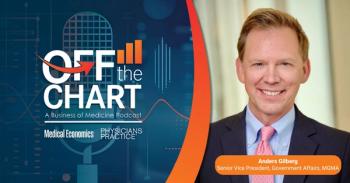
Integrating medical cannabis into your practice
A guide for physicians from one doctor’s personal experiences.
I was a patient before I became a physician. As a teenager, I was diagnosed with ankylosing spondylitis (AS), which grew progressively worse during my college years, leaving my body stiff and painful. I tried a series of failed treatments—from physical therapy to muscle relaxers, epidurals to opioids—but nothing worked.
As a medical student, one of my attendings introduced me to cannabis as a possible salve for my pain. I was mortified but desperate. As a student, training to be a doctor, my first thought was, "You are offering me pot? You want to make me a drug addict?" I grew up in the Bronx, where there was a huge social stigma around marijuana. Kids that smoked weed were either the dropouts or involved in gangs. I also grew up in a very traditional Chinese household. My parents believed in reefer madness—weed led to psychosis and schizophrenia!
I tried a few drops of the tincture under my tongue before bed one weekend. By Monday morning, I knew it was working. When I got my health back, I made it a point to learn everything I could about this plant medicine.
I have been helping patients integrate medical cannabis into their health and wellness for over a decade. Cannabis changed the trajectory of my life. I would not have been able to finish medical school and become a doctor had it not been for cannabis treatment. I had an educational advantage in doing my medical school training in California—California legalized medical cannabis in 1996.
My practice grew very quickly, with no need to market it. It includes children with epilepsy, chronic pain sufferers, and cancer patients. Patients appreciate that they could be honest with me about using cannabis or wanting to try it. I help integrate medical cannabis with my patients' conventional treatment and prescription medications.
At last count, the cannabis plant contains over 500 chemical compounds, many of them only in trace amounts. The two most prevalent cannabinoids are THC and CBD. CBD is also one of the “Big Six” cannabinoids. Think of CBD as a complementary compound to THC but without the mind-altering aspects. Potential Therapeutic Benefits of CBD: Reducing pain, inflammation, nausea, seizures, and anxiety; and aiding sleep.
There are over 20,000 PubMed citations regarding the human endocannabinoid system (ECS), cannabinoid receptors, and research regarding the physiological mechanisms of ECS components and how it works on other neurotransmitters of the brain and body. Single-molecule CBD recently became an FDA-approved pharmaceutical for pediatric seizure disorders.
The
However, there is some evidence that cannabis may heighten blood levels of certain medications via the liver's cytochrome P450 enzyme system. Clinicians should be aware of the following possibilities, but bear in mind that these interactions are not occurring in significantly large numbers and that monitoring can quickly resolve most issues.
There are sweeping changes in cannabis laws to date. Right now, 20% of Americans live in a state with legal marijuana. 64% of Americans approve of legalized marijuana, and 33 states have passed medical marijuana laws, and global regulations are changing rapidly. This has a considerable impact on physicians who currently receive little or no education on issues regarding medical cannabis. I support well-controlled clinical studies on the use of cannabis and related cannabinoids for patients with significant medical conditions for which current evidence suggests possible efficacy. I also support a review of the classification of cannabis under the Controlled Substance Act of 1970 to advance public health and patient safety.
In order to establish a legal medical cannabis framework in a clinician’s practice, I recommend all health professionals take a minimum amount of mandatory CE training in the pharmacokinetics of cannabinoid medicine and the endocannabinoid system.
When patients come to my clinic asking about integrating CBD medication into their health and wellness routine, I evaluate everything from prescription medications, recent blood work, imaging. I perform medical cannabis evaluations in the context of a full-scope general medical practice. Patients are looking for reliable information, but have few, trusted, healthcare-provided resources. As a consequence, this leaves patients looking for advice from unconventional sources. People are using cannabis, regardless of legality. As Health Care Practitioners, it is our responsibility to be capable of engaging in meaningful discussions with patients regarding the potential harms and benefits of cannabis.
About the Author
Newsletter
Optimize your practice with the Physicians Practice newsletter, offering management pearls, leadership tips, and business strategies tailored for practice administrators and physicians of any specialty.








